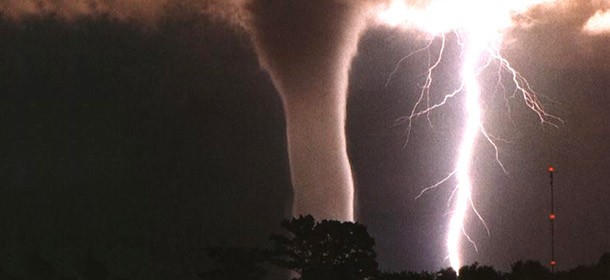
It’s that time of year in the Dallas Fort Worth and North Texas area when Severe Weather disrupts our lives. Here are some Safety Tips for Tornados and Severe Weather. More tornadoes occur in the United States than any other country in the world, and more tornadoes occur in Texas than any other state.
Tornados
- When you faced with a tornado warning Below-ground shelters, and reinforced "safe rooms" provide the best protection against tornadic winds.
- Basements are rare in North Texas but if you happen to have a basement, seek shelter in the Northeast corner of a basement.
- If a basement is not available, go to the smallest, most-interior room on the lowest floor, such as a closet or bathroom. Cover yourself to protect your body from flying debris.
- In schools, hospitals, factories or shopping centers, go to the smallest, most-interior rooms and hallways on the lowest floor. Stay away from glass enclosed places or areas with wide-span roofs such as auditoriums and warehouses. Crouch down and cover your head. Sometimes in restaurants or grocery stores people seek refuge in walk-in cooler.
- In high rise buildings, go to the smallest, most-interior rooms or hallways. Stay away from exterior walls and windows. In some buildings like a banks people commonly seek shelter in vaults.
- In cars or mobile homes, abandon them immediately!! Cars and mobile homes provide no protection from tornadic winds. If you are in either of those locations, leave them and go to a substantial structure or designated tornado shelter. Do not attempt to seek shelter beneath an overpass or bridge. They provide little or no shelter and have proved to be deadly options.
- If caught in the open, lie flat in a culvert, ditch or depression and cover your head.
Lightning
Lightning is a threat anywhere thunderstorms occur. If you hear thunder, it is time to take shelter.
- When inside:
- Avoid using the telephone, or other electrical appliances.
- Do not take a bath or shower, or stand near plumbing. - If caught outdoors:
- Seek shelter in a sturdy building. A hard-top automobile can also offer protection.
- If you are boating or swimming, get out of the water and move to a safe shelter on land.
- If you are in a wooded area, seek shelter under a thick growth of relatively small trees.
- If you feel your hair standing on end, squat with your head between your knees. Do not lie flat!
- Avoid isolated trees or other tall objects, water, fences, convertible cars, tractors and motorcycles.
Flash Floods
Flash Floods develop quickly. They can occur anywhere, along rivers or creeks, in low water crossings or in a dry stream bed. They can occur during any month and at any time during the day. In fact, flash floods often occur at night when it is difficult to find an escape route. Flash floods can be deceptive. Flood waters are likely deeper and moving faster than you think.
- When driving:
- Avoid low water crossings.
- Use alternate routes to avoid flood prone areas.
- Leave your vehicle immediately if it stalls in flood waters.
- Move to higher ground if you can do so safely.
- Most cars and light trucks will begin to float in as little as 12 inches of water.
- Act quickly, rising waters make vehicle doors difficult to open. - If you are outside:
- Everyone, especially children, should stay away from flooded creeks, streams or drainage ditches.
- Swiftly flowing water can quickly sweep away even the strongest swimmers.
- Soggy banks can collapse, dumping you into flood waters.
Hail
- In a car: Stop driving. If you can see a safe place close-by to drive to (like inside a garage or under a service station awning), do so as soon as you can. Make sure you pull completely off the highway. Do not stop under bridges or overpasses!
- Do NOT leave the vehicle until it stops hailing. Your car will furnish reasonable protection. Stay away from car windows. Cover your eyes with something (Carry a blanket in your car or use a piece of clothing). If possible, get onto the floor face down, or lay down on the seat with your back to the windows. Put very small children under you, and cover their eyes.
- In a building: seek shelter immediately in a sturdy building. Stay inside until the hail stops. Stay away from skylights and windows, especially windows that are being struck by hail.
- If you are caught outdoors, seek shelter immediately. If you can’t find something to protect your entire body, at least find something to protect your head. Stay out of culverts and lowland areas that might fill suddenly with water. Trees are a last resort. It is common during severe storms for trees to lose branches. Also, large isolated trees attract lightning.
After a severe weather event if you are faced with roof or other damage that needs to be repaired and need a recommendation for a good roofing company or construction contractor who can help you with home repairs, contact the Sullivan & Sullivan team, Your Real Estate Professionals.
No comments:
Post a Comment